Plus my strategy for dealing with double catch lights in the eye.
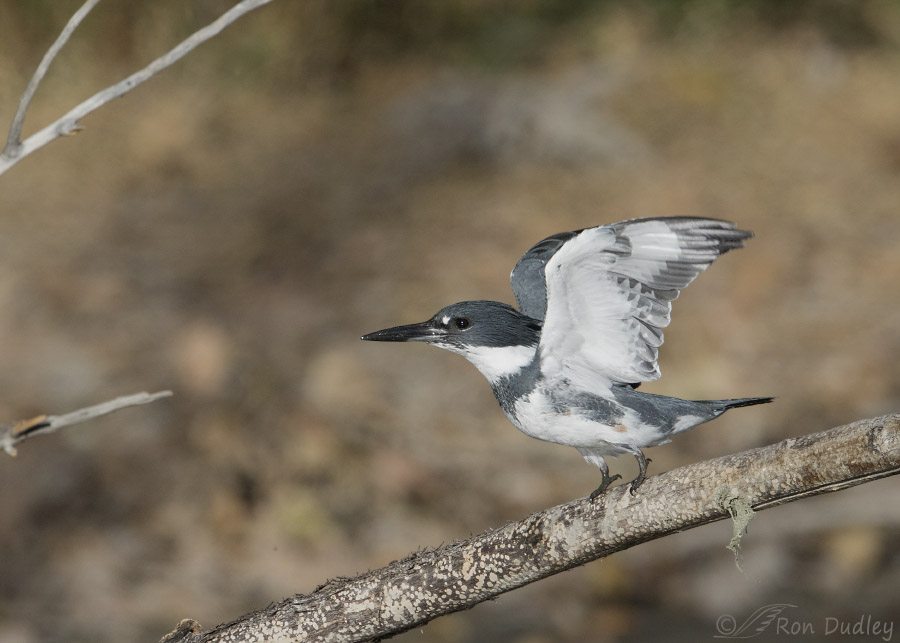
1/4000, f/7.1, ISO 800, Canon 7D Mark II, Canon EF 500mm f/4L IS II USM + EF 1.4 III Extender, not baited, set up or called in
Three days ago the male Belted Kingfisher I’ve been photographing lately gave me a second chance when I botched the first one. My primary goal was flight shots whenever he took off from this perch which I’ve referred to before as his “favorite dining table” because he nearly always lands here before swallowing his catch. When this shot was taken he had just swallowed a fish and quickly roused (shook his feathers) as he usually does before taking off for his favorite fishing perch to start all over again (those stubby little legs he’s pushing off with make me smile).
But this time I screwed up the flight shots so five minutes later…
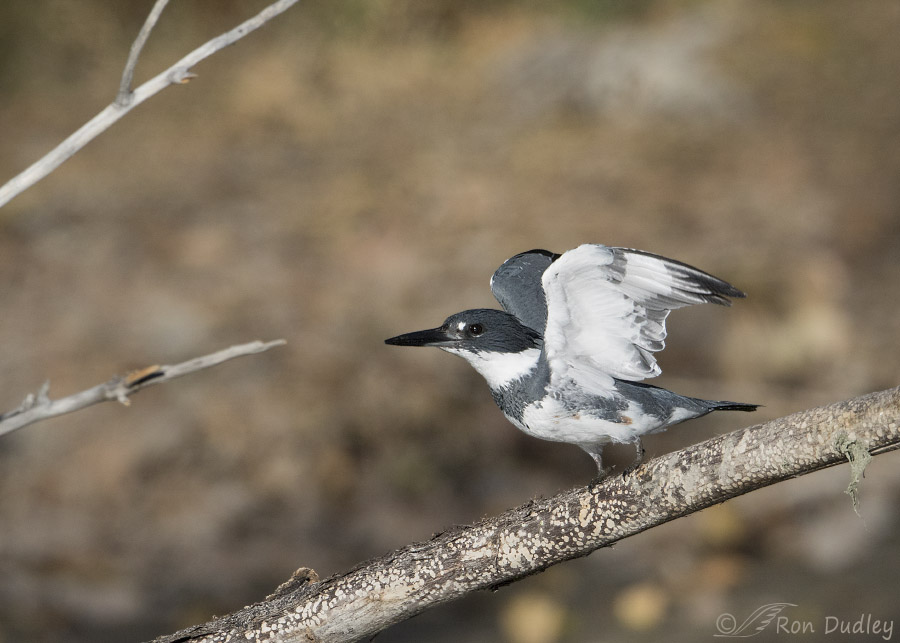
1/8000, f/6.3, ISO 800, Canon 7D Mark II, Canon EF 500mm f/4L IS II USM + EF 1.4 III Extender, not baited, set up or called in
he gave me another shot (or two) at it after he caught and swallowed another fish and this time I had better luck. Notice that he’s launching from almost the same spot as he did previously.
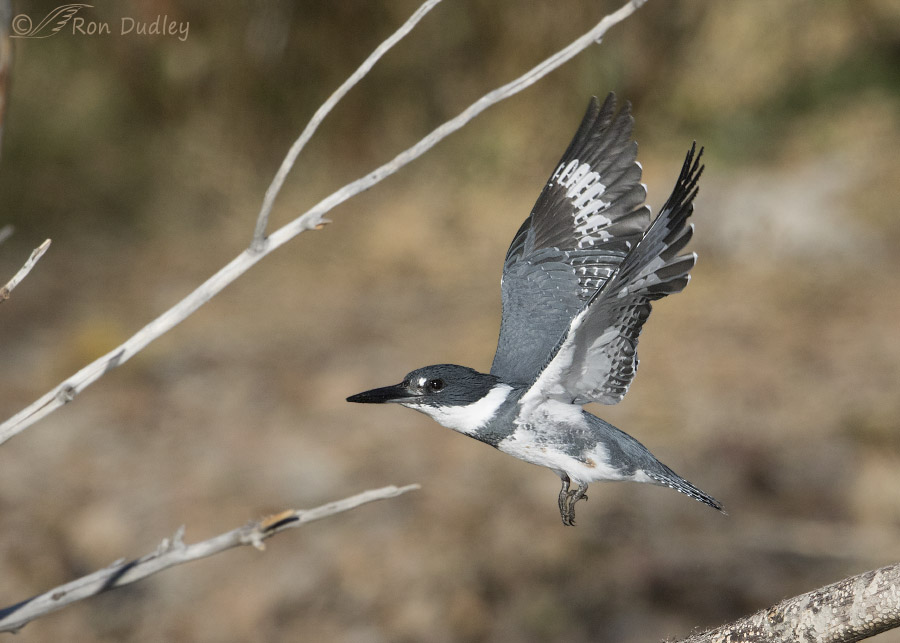
1/8000, f/6.3, ISO 800, Canon 7D Mark II, Canon EF 500mm f/4L IS II USM + EF 1.4 III Extender, not baited, set up or called in
This shot is probably my favorite in the series because the branches he’s approaching haven’t bisected his body yet and I like the wing positions and the excellent eye contact in flight.
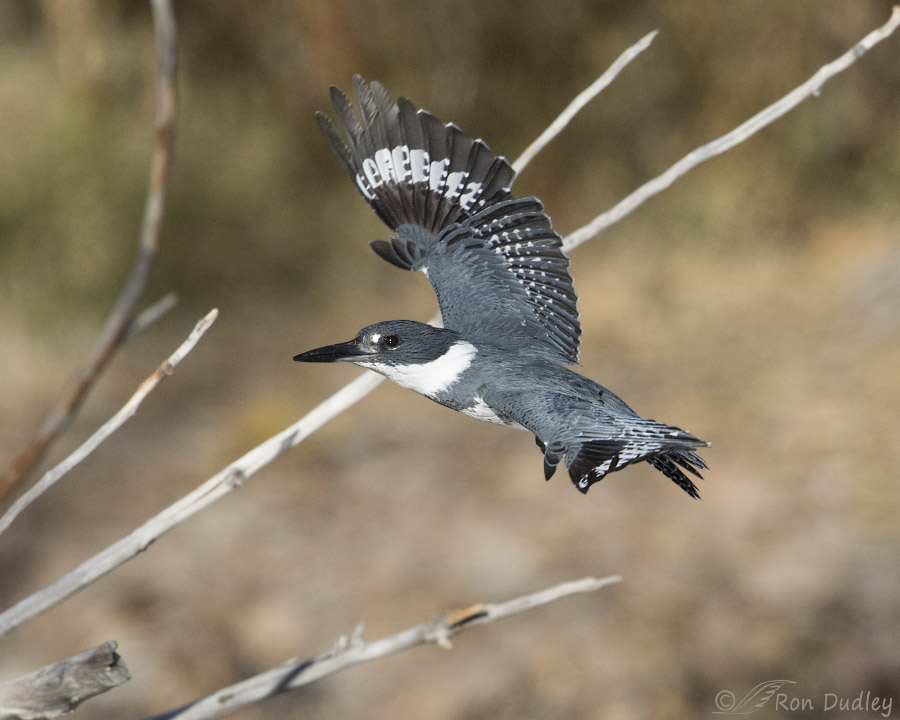
1/8000, f/6.3, ISO 800, Canon 7D Mark II, Canon EF 500mm f/4L IS II USM + EF 1.4 III Extender, not baited, set up or called in
As he began to bank to his left he gave me a great look at his right wing and that might be the most fully extended alula of any bird in flight I’ve ever seen, at least in my own photos. I didn’t even know they were capable of being extended that far forward.
I’m not happy with the branches behind the bird however.
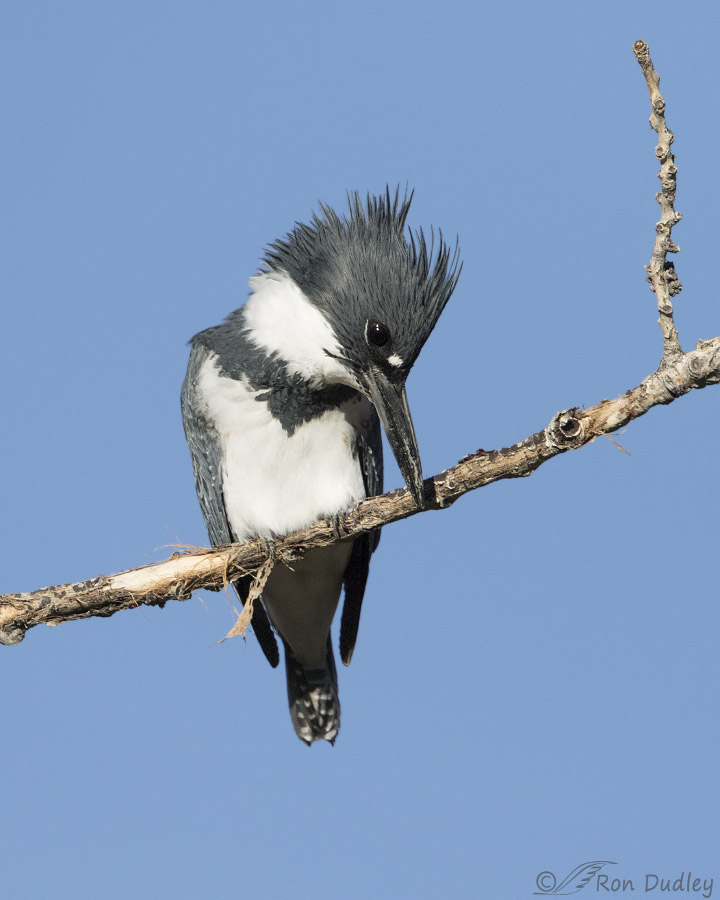
1/5000, f/6.3, ISO 800, Canon 7D Mark II, Canon EF 500mm f/4L IS II USM + EF 1.4 III Extender, not baited, set up or called in
This is where he landed a couple of seconds later and as you can see from his obvious fishing posture as he scanned the water below he was still hungry after eating two pretty good-sized fish in five minutes.
Notice the double catch light in his eye in this photo. I’m not always fond of double catch lights and I’ll sometimes remove one of them when I think the extra one came from an unnatural source. One of these two came from the sun behind me but for complicated reasons the second one was unlikely to have been a natural reflection off of water. I suspect it was a reflection from my pickup – possibly my bumper or even a window so…
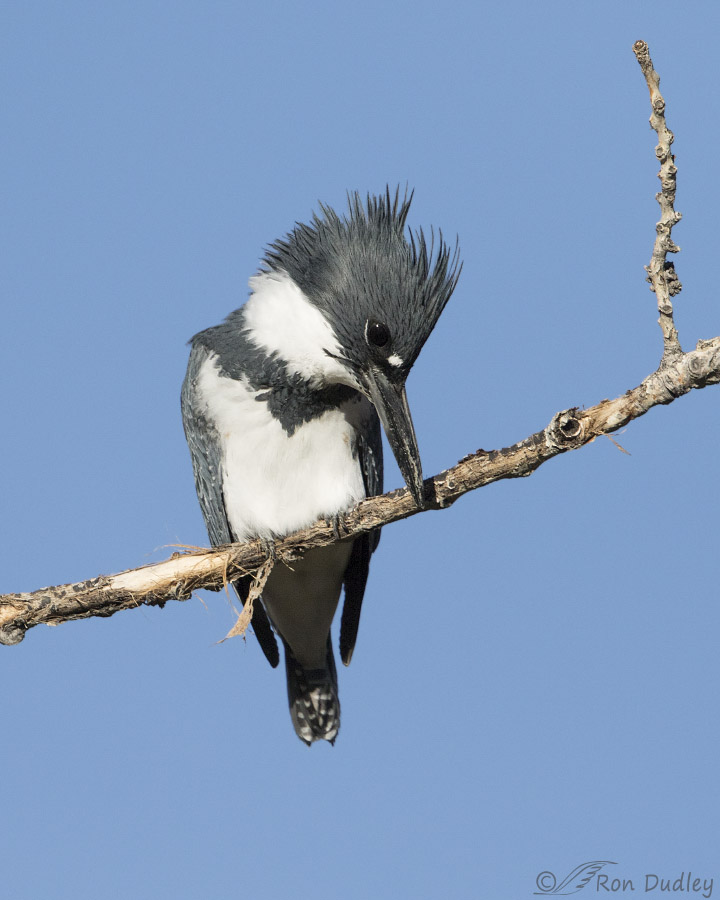
I removed one of them in this version of the image and I like it better. To my eye two catch lights were distracting. If they had both been from natural sources I wouldn’t have removed either one.
Probably…
Ron
Note: I keep coming back to those stubby little legs of the kingfisher, especially in the first photo. In the past I’ve read that they’re as short as they are as an adaptation for digging and then spending so much time in their nesting burrows on the sides of vertical mud banks.


In the first photo the Kingfisher appears to be standing on its ‘tippy-toes’!! I like your term ‘fishing pose’ where we see the spiked ‘hairdo’. As far as the catch light, I prefer the single, rather than double.
Interesting narrative and photos. It is almost like I’m sitting with you in person and we are having a conversation about your photos.
Thank you for more great photos, Ron.
“It is almost like I’m sitting with you in person and we are having a conversation about your photos”
I often get that feeling, Alice. Especially when I’m reading and responding to comments. It’s one of the things I enjoy about blogging.
If short stubby legs were the tradeoff which allowed me to fly I would accept in a heart beat – with no regrets.
Colour me unsurprised that you removed the second catch light. And thank you for giving us extra time with this charmer.
I’d make the same tradeoff, in an instant, EC.
Me, too! I SO want the ability to fly!
Unfortunately, some of us are grounded *with* short, stubby legs (adding insult to injury!).
“Fussy you” would have removed the second catch light…no doubt about it. Nice series. It’s obvious to me that King and queenfishers are a composite of at least three birds…head, body and feet…and none of them really match….
Although I usually paint only one cartch light, sometimes I put in more than one…example I might put in a small relected scene in an eagle’s eye…
“composite of at least three birds…head, body and feet…and none of them really match”
You’re right about that, Patty – oversized head, stubby legs and a relatively normal body.
Great shots as always, but I really like the last one! Thanks for removing the second catch light.
To be honest, wasn’t aware that could happen, in the rare instant that has happened to me I threw those pictures out, thought I had done something wrong! Live and learn!
Dick, I’ve seen photos from another photographer where the bird had as many of four catch lights. Often that happens when there’s ripples on the water and the sun is very low behind the photographer.
I’d say he’s using his alula to give you a “thumbs up!” He’s looking right at you and I think I also see a little smile. Time to take another “nemesis” off your list — these are great shots!
Time to take another “nemesis” off your list — these are great shots!
If that’s what it was I’ll take the thumbs up, Marty. Success with these birds was a very long time coming!
I never get tired of seeing Kingfishers. And this one is definitely special. From looking at these legs and thinking about the legs of Grebes, it’s clear that birds’ legs are adapted to what works for them, and that they aren’t always adapted for travel on land. I love getting to see this guy taking off, and especially like seeing the feather patterns on that right wing. And I’m very happy to see that apparently the police incident didn’t seem to have a long term effect on your relationship with him.
Good point about the adaptations of bird legs and feet, Susan. Throw in the variety we see with wading birds, raptors and a host of others the marvels of evolution become obvious (unless you’re an evolution denier – don’t even get me started on that one…)
Yeah, here goes this morning’s string of OH WOWs plus the series of ridiculously redundant superlatives. Seriously, these images are just COOL and what a delight for this lovely morning!
And there’s the bonus–my new information for the day about the reason for their stubby legs and that they nest in burrows on vertical mud banks! That would seem to me to be a little dangerous in that waters aren’t usually that trustworthy in the springtime, but what do I know? Obviously, it mostly works for them. And just goes to prove that there’s a reason for everything in evolution, despite the occasional OOOPs (humans). LOL!
Belted Kingfishers are just COOL birds. Yes, I’m easily amused, but still, they’re pretty darn spectacular.
I’d say we’re more than just an “oops!”
Yep Marty, it’s far more likely one of those AH CA-CA moments, but I was being polite
“That would seem to me to be a little dangerous in that waters aren’t usually that trustworthy in the springtime”
Thank you, Laura. Every kingfisher burrow I’ve seen has been high above “normal” later level, even in springtime. But as we all know, normal isn’t always the case so there may be instances where they’re flooded out. It would be my guess that an even bigger problem would be having rushing water washing out the water from below and the entire stream bank collapsing.
EGADS, I hadn’t thought about that possibility. Life is precarious but simultaneously persistent.
Outstanding series Ron!
Charlotte
Thanks, Charlotte.
YES! You and your “model” are doing VERY well. I agree, the double catch lights are a bit strange. Wonderful “pose” as he looks for his next meal. Love the 3rd photo even if the branches are there.:)
Judy, I don’t always find double catch lights to be distracting but in certain cases they are. Occasionally I even get three or more of them!
Pure Awesomeness!
Thanks very much, Cheryl.